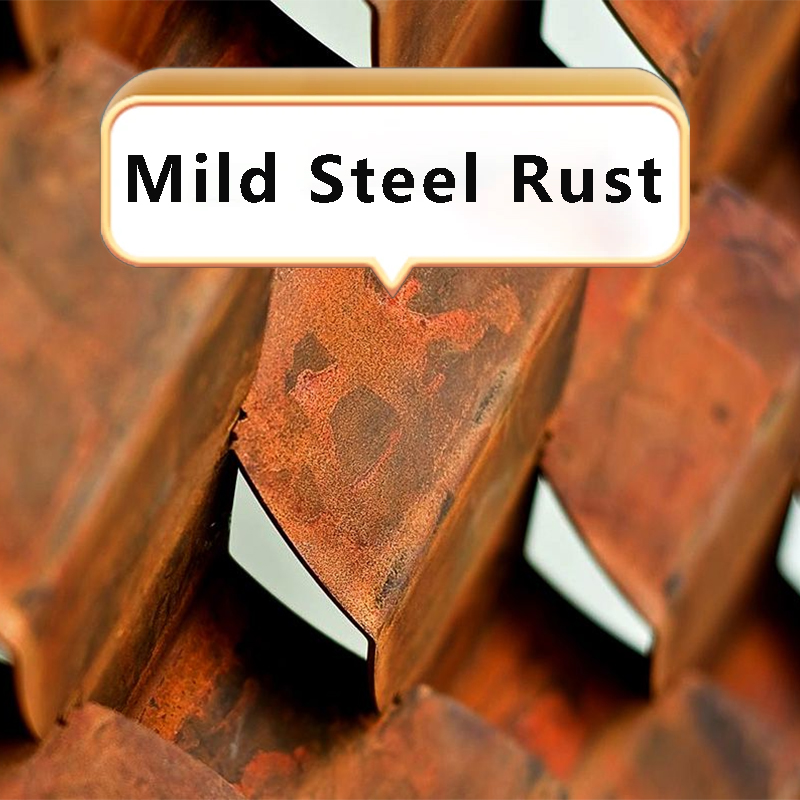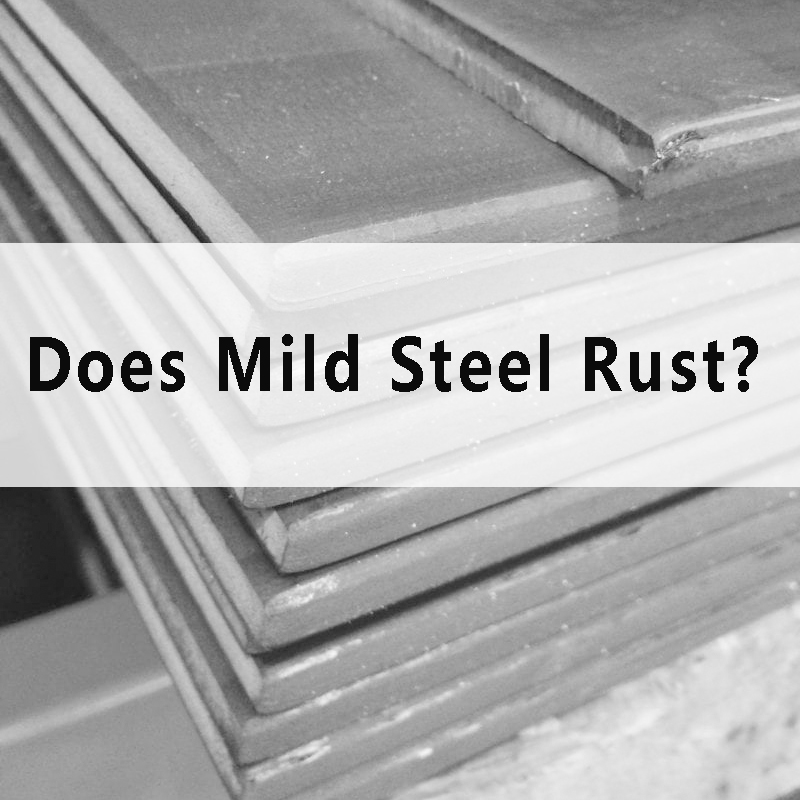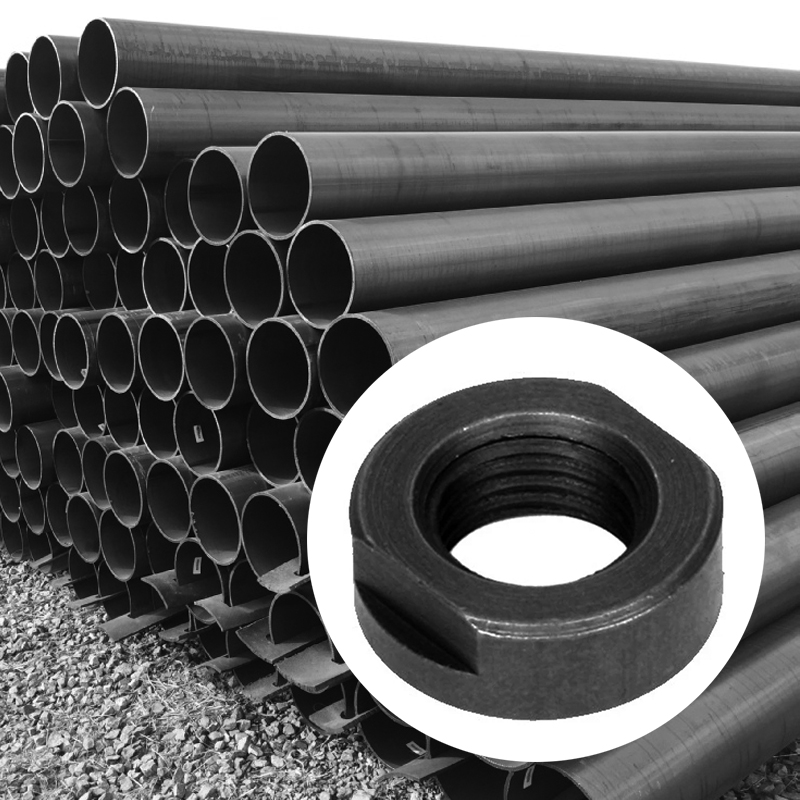Does Mild Steel Rust? Causes, Methods of Rust Removal
 Jul 11,2024
Jul 11,2024

Mild steel, also known as low carbon steel, is one of the most widely used materials in the manufacturing industry. Its versatility, affordability, and mechanical properties make it a preferred choice for various applications. However, mild steel is prone to rust and corrosion, which can compromise its integrity and longevity. Understanding rust formation and effective prevention methods is crucial for ensuring the durability and performance of mild steel components. Do you want to know the difference between mild steel and stainless steel.

Mild Steel Definition and Composition
Mild steel is a type of carbon steel with a low carbon content, typically around 0.05% to 0.25% by weight. This low carbon percentage results in a material that is relatively soft and ductile compared to other forms of steel. Mild steel's composition generally includes:
|
Element |
Percentage |
Function |
|
Carbon (C) |
0.05% - 0.25% |
Provides strength and hardness |
|
Iron (Fe) |
98.0% - 99.0% |
Base element |
|
Manganese (Mn) |
0.25% - 0.40% |
Improves hardness and strength |
|
Silicon (Si) |
0.10% - 0.30% |
Increases strength |
|
Sulfur (S) |
≤ 0.05% |
Can cause brittleness, usually minimized |
|
Phosphorus (P) |
≤ 0.04% |
Can cause brittleness, usually minimized |
Common Uses of Mild Steel
Mild steel is used across various industries due to its adaptability and cost-effectiveness. Its preference in these applications stems from its ease of fabrication and ability to undergo various treatments to enhance its properties.Common applications include:

Construction
Beams, columns, and reinforcements
Automotive
Body panels and frames
Machinery
Shafts, gears, and machine components
Piping
Water and gas pipelines
Household Items
Furniture, appliances, and fixtures
What is Rust? Basic Definition
Rust is a type of corrosion that specifically affects iron and its alloys, such as steel. It is a reddish-brown oxide formed by the reaction of iron and oxygen in the presence of moisture. The chemical composition of rust primarily includes hydrated iron oxide. Is Rust Magnetic?The rusting process involves:
Oxidation
Iron reacts with oxygen to form iron oxide.
Hydration
Iron oxide further reacts with water to form iron oxide.
Formation
Iron oxide combines with water to produce hydrated iron oxide, commonly known as rust.

Factors Influencing Rust Formation
Several factors can influence the rate and extent of rust formation on mild steel:
|
Factor |
Description |
|
Humidity |
High humidity levels accelerate rust formation due to increased moisture availability. |
|
Temperature |
Higher temperatures can increase the rate of chemical reactions, speeding up rust formation. |
|
Pollutants |
Industrial pollutants like sulfur dioxide and chlorides can enhance the corrosiveness of the environment. |
|
Composition |
The presence of impurities such as sulfur and phosphorus can increase the susceptibility to rust. |
|
Surface Finish |
Rough surfaces have a higher tendency to trap moisture and contaminants, promoting rust. |
Why Mild Steel Rusts
Mild steel rusts because it contains iron, which reacts readily with oxygen and moisture to form iron oxide. Unlike stainless steel, which contains chromium that forms a protective oxide layer, mild steel lacks this self-protective mechanism. This makes mild steel more prone to rust when exposed to air and moisture.
Conditions That Accelerate Rusting
Several conditions can accelerate the rusting process in mild steel:
Exposure to Moisture and Oxygen
Constant contact with water and oxygen increases the likelihood of rust formation.
Industrial and Environmental Pollutants
Chemicals such as sulfur compounds and chlorides can catalyze the rusting process.
Preventing Rust on Mild Steel
Preventing rust on mild steel involves applying protective coatings, regular maintenance, galvanization, and using rust inhibitors to shield the metal from moisture and environmental contaminants. https://www.tuofa-cncmachining.com/
Surface Treatments and Coatings
Surface treatments and coatings are essential for protecting mild steel from rust. Common methods include:
|
Method |
Description |
|
Paint |
Provides a physical barrier against moisture and oxygen. |
|
Powder Coating |
Offers a durable and aesthetic finish that resists corrosion. |
|
Oil and Grease |
Temporary protective layers that prevent moisture contact. |
Galvanization
Galvanization involves coating mild steel with a layer of zinc, which acts as a sacrificial anode. The process includes:
Hot-Dip Galvanization
Steel is dipped in molten zinc.
Electro-Galvanization
Zinc is electroplated onto the steel surface.
Benefits of galvanization include enhanced corrosion resistance and extended lifespan of steel products.
Regular Maintenance and Care
Routine inspection and maintenance are crucial for preventing rust formation on mild steel. Best practices include:
Regular Cleaning
Remove dirt and contaminants that can hold moisture.
Inspection
Check for signs of rust and address them promptly.
Reapplication of Protective Coatings
Ensure coatings remain intact and effective.
Rust Removal Methods
Rust is a common problem for mild steel, which can be caused by exposure to moisture and air. There are several methods for removing rust from mild steel, including:
Mechanical Methods
Mechanical methods for rust removal include:
Sandblasting
Abrasive particles are blasted at high pressure to remove rust.
Grinding
Use of abrasive wheels or discs to grind away rust.
Wire Brushing
Manual or powered brushes to scrub off rust.
Chemical Methods
Chemical methods involve the use of rust removers and acids:
Rust Converters
Convert rust into a stable compound.
Acid Treatments
Phosphoric or hydrochloric acid solutions dissolve rust.
DIY vs Professional Rust Removal
Deciding between DIY and professional rust removal depends on the extent of rust and the application:
DIY
Suitable for small, accessible areas with minimal rust.
Professional
Recommended for extensive rusting or critical components requiring precision.
Conclusion
Understanding rust and its impact on mild steel is crucial for maintaining the integrity and longevity of steel components. By implementing effective prevention and removal methods, you can ensure that your mild steel products remain durable and reliable. Tuofa CNC Factory in China are committed to providing innovative solutions to protect your steel needs, ensuring superior performance and satisfaction.Click here to get a free quote.
 Tel/WeChat:
Tel/WeChat:  Email:
Email: 
 Home
Home
 Is Carbon Fiber Stronger Than Steel? Strength and Weight
Is Carbon Fiber Stronger Than Steel? Strength and Weight 







